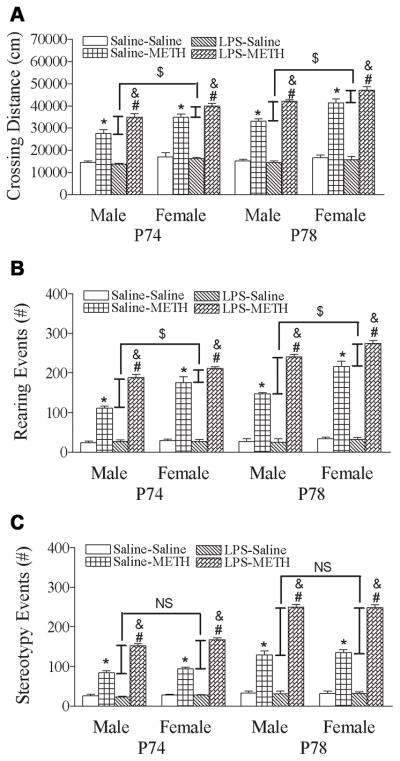Fig. 7.
Effect of neonatal LPS-exposure induced alteration in METH-induced behavioral sensitization (P74) and reinstated behavioral sensitization (P78), as determined by the total distance traveled (A), rearing responses (B), and stereotyped behaviors (C) in the male and female rats. The results are expressed as the mean±SEM of five animals in each group and analyzed by two-way ANOVA for the behavioral response followed by Student-Newman-Keuls test. * P<0.05 represents significant difference for the saline+METH group as compared with that of the saline+saline group. # P<0.05 represents significant difference for the LPS+METH group as compared with that of the LPS+saline group. & P<0.05 represents significant difference for the LPS+METH group as compared with the saline+METH group. The narrow bars represent the increment in LPS-exposure enhanced METH-induced behaviors responses in male or female rats. $ P<0.05 represents significant difference between the increment of distance traveled or rearing responses in LPS-exposure enhanced METH-increased behavioral responses in male rats as compared with that of the female rats. NS represents no significant difference between the increment of stereotyped behaviors in LPS-exposure enhanced METH-increased behavioral responses in male rats as compared with that of the female rats.

